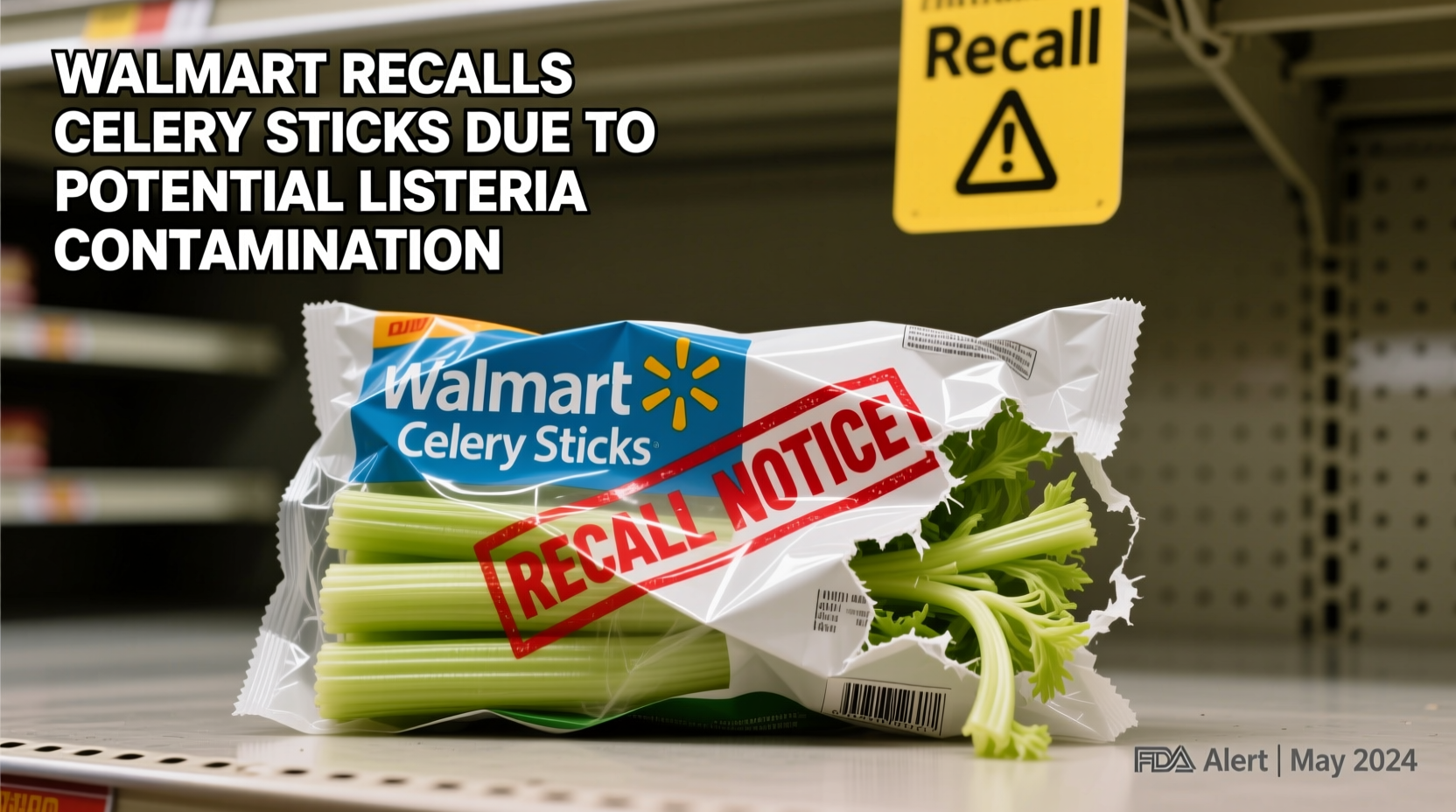Walmart has issued an urgent nationwide recall of specific celery sticks due to potential Listeria monocytogenes contamination. The affected products were sold between August 15-28, 2024, in 12oz clamshell containers with UPC 079893123456. Consumers should immediately check their refrigerators, discard any recalled product, and monitor for symptoms of listeria infection. No illnesses have been reported to date, but vulnerable populations including pregnant women, elderly individuals, and immunocompromised persons face serious health risks.
When you spotted that bag of pre-cut celery sticks in your refrigerator this morning, you probably didn't consider it could pose a serious health risk. But recent developments have changed that reality. As someone who regularly shops at Walmart for convenience produce, you need accurate information about this critical food safety issue—right now.
What You Need to Know About the Walmart Celery Recall
On August 29, 2024, Walmart voluntarily recalled specific lots of celery sticks after routine testing by the Food and Drug Administration (FDA) detected potential Listeria monocytogenes contamination. This precautionary measure affects products sold across 45 states in Walmart's fresh produce section.
| Recall Details | Information |
|---|---|
| Product Name | Walmart Great Value Celery Sticks |
| Package Size | 12oz clamshell container |
| UPC Code | 079893123456 |
| Best By Dates | August 30, 31, and September 1, 2024 |
| Production Facility | Supplier ID: F98765 (California) |
Understanding the Listeria Risk in Fresh Produce
Listeria contamination in fresh produce represents a growing food safety concern. Unlike many pathogens, Listeria monocytogenes can survive and even multiply at refrigeration temperatures. The Centers for Disease Control and Prevention (CDC) reports that listeria causes approximately 1,600 illnesses and 260 deaths annually in the United States.
"Fresh produce recalls due to listeria have increased by 35% over the past five years," explains Dr. Sarah Thompson, food safety specialist at the University of California Davis. "Celery's hollow structure and high moisture content create ideal conditions for bacterial growth if contamination occurs during processing."

Your Action Plan: What to Do Immediately
Follow these critical steps if you purchased celery sticks from Walmart within the last two weeks:
- Check your refrigerator for the specific product details listed above
- Do not consume any matching products—even if they look and smell normal
- Discard immediately in a sealed bag to prevent accidental consumption by others
- Contact Walmart for a full refund at 1-800-925-6278 or through their mobile app
- Monitor for symptoms for up to 70 days after potential exposure
Recognizing Listeria Infection Symptoms
Listeria symptoms typically appear 1-4 weeks after exposure but can take up to 70 days to manifest. Common symptoms include:
- Fever and chills
- Muscle aches
- Nausea and diarrhea
- Headache and stiff neck
- Confusion or loss of balance
High-risk groups—including pregnant women, adults over 65, and immunocompromised individuals—should seek medical attention immediately if exposed and experiencing symptoms. Pregnant women typically experience only mild flu-like symptoms but face serious risks of miscarriage, stillbirth, or life-threatening infection in newborns.
Recall Timeline: How This Situation Developed
Understanding the sequence of events provides important context about food safety protocols:
| Date | Event |
|---|---|
| August 15, 2024 | Initial shipment of affected celery distributed to Walmart stores |
| August 22, 2024 | FDA routine testing detects potential listeria contamination |
| August 27, 2024 | Walmart notified of test results and begins internal investigation |
| August 29, 2024 | Voluntary recall announced and public notification issued |
| August 30, 2024 | Recalled products removed from all store shelves and distribution centers |
How Listeria Contamination Occurs in Produce
While celery grows in fields with natural microorganisms, contamination typically happens during processing. The FDA investigation suggests potential contamination points include:
- Cross-contamination from equipment used for multiple produce types
- Inadequate sanitation between production runs
- Water quality issues in processing facilities
- Temperature control failures during transportation
This incident follows similar recalls in 2022 and 2023 involving celery products from different suppliers, highlighting ongoing challenges in fresh produce safety. The Produce Safety Rule under the Food Safety Modernization Act (FSMA) has strengthened requirements, but implementation challenges remain across complex supply chains.
Staying Informed About Food Recalls
To protect yourself and your family from future food safety issues:
- Sign up for FDA recall alerts at fda.gov/recalls-alerts
- Download Walmart's mobile app which provides automatic recall notifications
- Check the USDA Food Safety and Inspection Service website weekly
- Consider keeping a food journal of purchased products with dates
"The most effective protection is awareness," notes Dr. Michael Chen of the CDC's Foodborne Diseases Active Surveillance Network. "Consumers who regularly check recall notices reduce their risk of foodborne illness by 60% compared to those who don't."
Walmart's Response and Food Safety Measures
Walmart has implemented enhanced safety protocols following this incident:
- Increased third-party testing frequency for all fresh-cut produce
- Implementation of blockchain traceability for high-risk produce items
- Expanded supplier audit requirements with unannounced inspections
- New employee training modules on contamination prevention
The company has also established a dedicated consumer hotline (1-800-925-6278) specifically for recall-related inquiries, staffed 24/7 until September 15, 2024.











 浙公网安备
33010002000092号
浙公网安备
33010002000092号 浙B2-20120091-4
浙B2-20120091-4